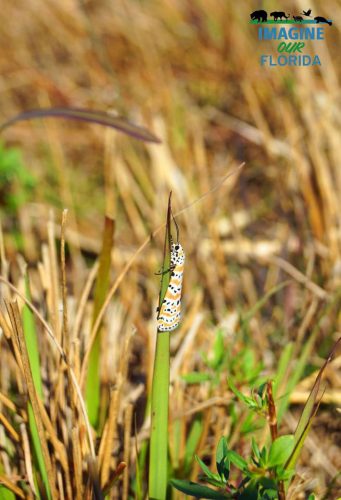Most moths are nocturnal, meaning they are only seen at night but, this beautiful moth, the Ornate Bella Motha (Utetheisa ornatrix), can be seen fluttering in the daytime. A very distinguishing feature of this species of moth is the bright pink color seen when flying. When at rest, this coloring is often covered by the top wings. Their coloration greatly varies, which for a long time confused taxonomists who had multiple names for the species based on their appearance. It turns out they were all a single species.
These beauties can be seen through most of the Eastern United States through the Midwest. The eggs are small yellow spheres. The larvae are an orange color with black patches and white spots with many hair-like structures called setae. The pupae are encased in a brown and black sac covered in a light coat of silk. A common native host plant for these moths is the Crotalaria avonensis, a beautiful plant with yellow flowers. These plants produce pyrrolizidine alkaloids, which are toxic to many species, but not the ornate Bella moth. These moths consume the plants and thus become toxic themselves. This toxicity protects them for the short three weeks of their life.

